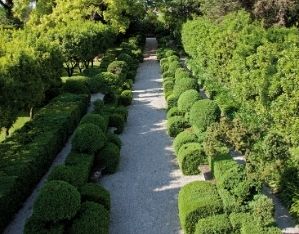Known as the “Castle of the Dukes of Bovino” or the “Palace of the Tower”, this villa offers a multitude of attractions, from its rural setting to an elegant neoclassical building and, above all, its extensive “Italian-style” garden, dating back to the late 18th century.
The Guevara Dukes of Bovino, a family accredited at the Bourbon court, built a summer residence here at the end of the 18th century, not far from the Royal Palace of Caserta, along with a hanging garden. The property has been in the Porfidia family since 1936. The pre-existing watchtower incorporated into the structure reveals the complexity of a number of stratifications that have taken place over the years. More than anything else, the building’s overall look derives from its 18th-century remodelling. One event in particular changed the property’s fate: a Bourbon decree from 1781 that granted the Guevara family, in particular Duchess Anna Maria Surdo Guevara, Queen Maria Carolina’s lady-in-waiting, the faculty of making use of a derivation of the Carolino Aqueduct at no charge. The family stored this water in a cistern that to this day feeds the villa’s many water features. The Duchess made a key contribution to the layout, creating an “Italian-style” garden that includes an ancient forest of holm oaks used as a hunting estate. Many elements are worth a mention: the “viale degli Ombrellini”, an example of 18th-century ars topiary, two fishponds and a number of fountains. The tree-lined avenues are lined by Agapanthus and roses, in some places surmounted by arch-shaped hedges of Taxus baccata. In the first half of the 19th century, the park was updated to reflect the incoming fashion of landscaped gardens; the old-growth wood was converted into a romantic promenade, and tall trees such as the Cinnamomun camphora and the Magnolia grandiflora were added.




